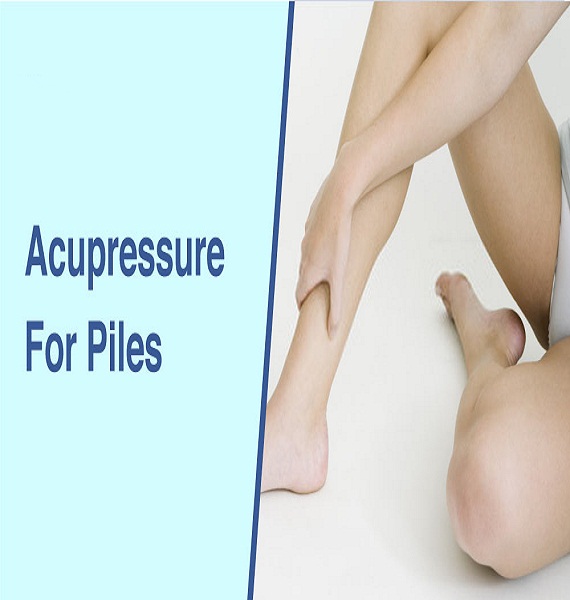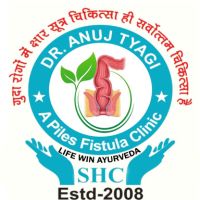
Acupressure Points for Piles
Piles, also known as hemorrhoids, can be a painful and uncomfortable condition. While traditional treatments often involve medication or surgery, many people are turning to alternative therapies like acupressure for relief.
At Piles Fistula Clinic in Ghaziabad, under the expert care of Dr. Anuj Tyagi, we explore how acupressure can help manage and alleviate the symptoms of piles.
This guide will delve into the acupressure points that can provide relief and offer practical advice on incorporating this technique into your treatment plan.
What is Acupressure?
Acupressure is an alternative therapy that involves applying pressure to specific points on the body.
These points, known as acupoints, are believed to be connected to different organs and systems through energy pathways called meridians.
By stimulating these points, acupressure aims to promote healing and restore balance within the body.
How Acupressure Can Help with Piles
Piles occur when veins in the rectal area become swollen and inflamed. Symptoms can include pain, itching, and bleeding.
While acupressure cannot cure piles, it can help manage symptoms by improving blood circulation, reducing inflammation, and promoting relaxation.
Benefits of Acupressure for Piles:
- Pain Relief: Acupressure can help reduce pain and discomfort associated with piles.
- Reduced Inflammation: Targeted acupressure points may help decrease inflammation in the affected area.
- Improved Circulation: By stimulating certain points, acupressure can enhance blood flow to the rectal area.
- Stress Reduction: Managing stress through acupressure can contribute to overall well-being and reduce symptoms of piles.
Key Acupressure Points for Piles
Here are some key acupressure points that can be beneficial for managing piles.
For best results, apply gentle pressure to these points using your fingers, and hold for 1-2 minutes. Repeat this process 2-3 times a day.
1. Large Intestine 4 (LI4)
Location: On the back of the hand, between the thumb and index finger, in the webbing.
Benefits: LI4 is known for its ability to relieve pain and reduce inflammation. Stimulating this point can help alleviate discomfort associated with piles.
2. Spleen 6 (SP6)
Location: About four fingerbreadths above the inner ankle bone, on the back of the tibia.
Benefits: SP6 is often used to address issues related to the digestive system. It can help improve blood flow and reduce inflammation in the rectal area.
3. Bladder 57 (BL57)
Location: On the back of the leg, just below the calf muscle, in the center of the lower leg.
Benefits: BL57 can be effective for reducing pain and improving circulation. It is particularly useful for addressing symptoms in the lower body.
4. Governing Vessel 3 (GV3)
Location: On the lower back, just below the lumbar spine.
Benefits: GV3 is known to support overall lower back health and can aid in relieving discomfort associated with piles.
5. Kidney 3 (KD3)
Location: On the inside of the ankle, just behind the medial malleolus.
Benefits: KD3 can help strengthen the lower back and improve circulation, which can be beneficial for managing piles.
How to Perform Acupressure
-
Find a Comfortable Position: Sit or lie down in a relaxed position to ensure you can apply pressure comfortably.
- Locate the Acupressure Points: Use a reference image or guide to find the exact locations of the acupressure points.
- Apply Gentle Pressure: Use your fingertips to apply gentle, firm pressure to the points. You should feel a slight sensation but not pain.
- Hold and Release: Hold the pressure for 1-2 minutes, then release. Repeat as needed.
- Monitor Your Response: Pay attention to how your body responds to the acupressure. Adjust the pressure or frequency as needed.
Incorporating Acupressure into Your Treatment Plan
Acupressure can be a valuable addition to your treatment plan for piles. However, it is essential to combine it with other recommended therapies and lifestyle changes. Here are some additional tips:
1. Consult with a Healthcare Professional
Before starting acupressure or any new therapy, consult with your healthcare provider. Dr. Anuj Tyagi at Piles Fistula Clinic in Ghaziabad can provide personalized advice and ensure that acupressure complements your overall treatment plan.
2. Maintain a Healthy Lifestyle
In addition to acupressure, maintain a healthy diet, stay hydrated, and engage in regular exercise. These practices can help prevent and manage piles.
3. Monitor Your Symptoms
Keep track of your symptoms and how they respond to acupressure. If you experience any changes or worsening of symptoms, consult with Dr. Anuj Tyagi for further evaluation.
Call to Action
If you are struggling with piles and looking for effective relief, consider incorporating acupressure into your treatment plan.
For personalized advice and a comprehensive treatment approach, visit Piles Clinic in Ghaziabad. Dr. Anuj Tyagi and our experienced team are here to help you find the best solutions for your health and well-being.
Contact us today to schedule a consultation and start your journey towards relief from piles!
